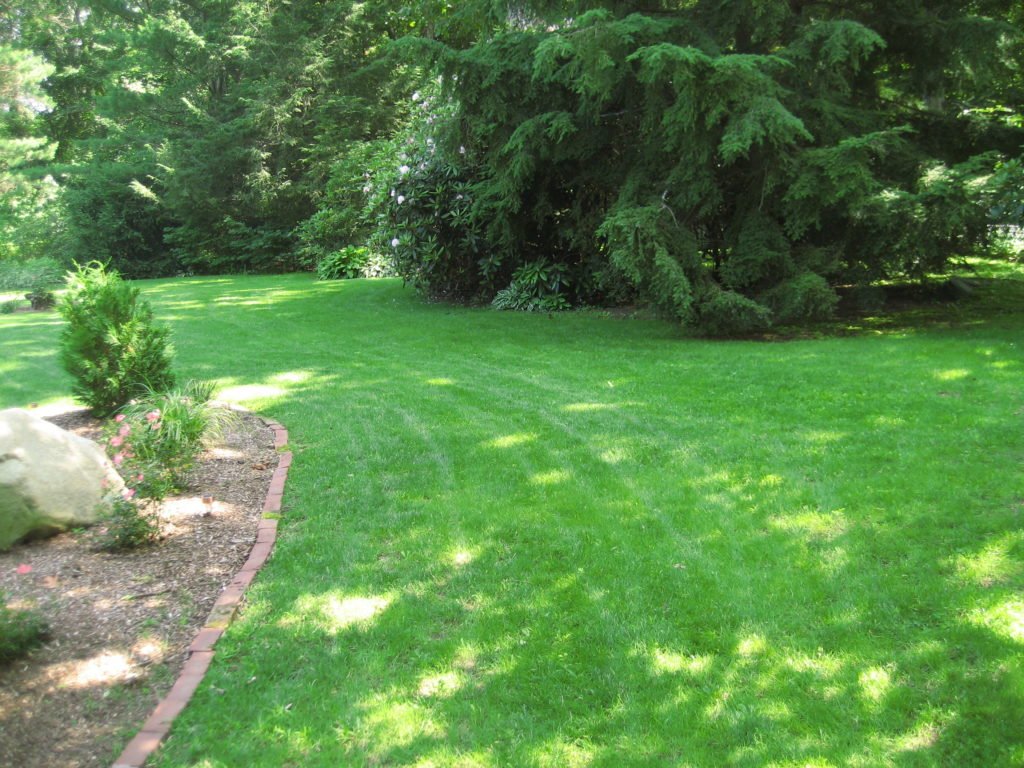As we try and streamline our business for ourselves and for our customers, we are moving forward to our goal of sustainability and commitment to a low maintenance, environmentally friendly landscape. After years of planning, education and preparation, we are ready to move towards phasing out synthetic fertilizers and pesticides from our programs. Although this might seem like a sudden, drastic change we carefully outweighed the pros and cons and devised the best, affordable alternative.
Why the Switch?
As a growing body of research accumulates covering the negative effects of excessive nitrogen and phosphorus use, nitrogen runoff in the water, and overuse of neonicotinoid pesticides we would like to
- Reaffirm that although nitrogen serves to aid plant growth, weeds and nonnative plants tend to grow more readily with additional nitrogen supplies. Because of its nonspecificity, plants that have lower nitrogen needs end up either being harmed or dying, causing a decline in native species, according to the Ecological Society of America.
- Further reaffirm when nitrogen levels in bodies of water increase, they aid in the overgrowth of algae, a process called eutrophication. As algae die and decompose, organic matter in the water increases and oxygen decreases therefore causing algal and seaweed blooms and a decline in fish populations.
- Emphasize the fact that nitrogen is a short term, temporary, bandaid solution to a healthy lawn and 5 applications of a nitrogen fertilizer per season with a yearly grub control is redundant, excessive, unsustainable, wasteful and careless.
- Support Nova Scotia and Cape Cod governments in their existing legislation banning non-essential, cosmetic use pesticides and fertilizers and begin by ourselves to implement it in our state.
- Take into consideration the growing body of evidence against the overuse of neonicotinoids (grub and chinch bug control on lawns; 3rd application) and their effect on the decline of honeybees.
Expectations from an Organic Program
Although synthetics are a low cost, effective way to produce a monoculture, perennial, cool season turf it is not the most responsible solution environmentally. Therefore we understand:
- A lawn with ‘weeds’ is not necessarily an unhealthy lawn.
- It is our, the service provider’s, responsibility to educate the customer on the benefits of a diverse lawn and ecosystem.
- The key to a healthy lawn and ecosystem is enriching the soil by adding nutrients and microorganisms from roots up not synthetic embellishments that superficially provide excessive minerals to just the shoots.
- Synthetics and chemicals are not bad per se but they are overused and should be used only as a last resort
- Any organic program must be comparable, effective and competitive to synthetic programs.
What we are Offering
We have developed a simple 3-step with a 4th step, if deemed necessary, organic program to replace all our current fertilizing programs as follows:
- Early spring: A corn gluten application which is the high nitrogen, natural, crabgrass pre- emergent alternative
- Mid to Late Spring: Top-dressing with compost to add microorganisms and organic matter to the soil
- Early Summer (if deemed necessary by applicator): An application of Milky spore disease, a bacteria ingested by root feeders of turf that contains a crystalline protein that tears the stomach lining of insects that ingest it.
- Late Summer to Early Fall: Slice seeding and aerating
You may also visit our FAQ page for some frequently asked questions about the program.



2 Responses
Hello,
I’m very interested in your organic program for my yard at 25 Ledge Rd east greenwich, ri.
Looking forward to your reply. Thx!
Hi Steve,
Thanks for commenting! We just sent you an email with more information.
-Becca